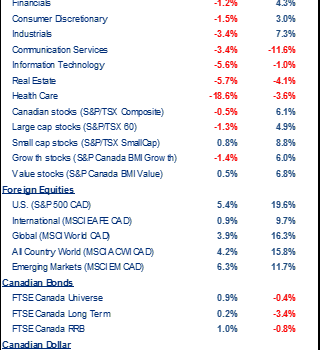 By Rab Govil
By Rab Govil
The world is currently in an era of digital transformation, where information flows abundantly. And banks are realizing that data-driven insights—which help deliver a best in class customer experience—aren’t just a competitive advantage but a necessity for sustainable growth. In fact, in 2022, WBR Insights found that 62% of US and Canadian financial leaders surveyed said improving access to siloed and distributed data was one of their top data initiatives.
Currently, delivering a great customer experience is near impossible because banking data is spread across various information silos, meaning retrieving data-driven insights requires a huge amount of manual effort. However, graph-based data models are helping banks change that.
These models naturally represent real-world networks that allow for efficient querying and exploration of interconnected information, crucial for enhancing the customer experience, personalized recommendations, and risk assessment.
So, how exactly do graph-based data models unlock data and drive insights?
Leveraging a graph-based data model
The financial world is a tangled web of relationships, from customers and accounts to transactions and financial institutions.
Traditional relational databases have long held sway in banking and are built on tables with rows and columns. They’re efficient for handling high volumes of standardized data and excel in tasks like basic queries, reporting, and aggregation. However, they struggle with complex, interconnected data and lack flexibility for evolving relationships, meaning querying intricate connections can be cumbersome and inefficient, hindering data-driven decision-making.
This is where graph-based data models step in, offering a powerful tool for navigating the complex world of banking data, regardless of the underlying models and formats. These models utilize nodes for entities and edges for relationships, offering flexibility and dynamism in handling interconnected data, which facilitates easy transversal and querying of linked data. Graph-based data models map complex networks of individuals, accounts, and transactions at scale, providing a holistic view of financial activity and customer engagement, all while effectively mitigating risks.
With many banks and financial institutions working with siloed systems, data models, and fragmented processes, this can have a knock-on effect causing a lack of connectivity and communication. Take disclosures, for example; siloed systems and disjointed data can lead to missed details, inconsistencies, and errors, creating more work later on and potential issues regarding compliance and audits. Therefore, embracing a graph-based data model enables banks to see the bigger picture, powering data-driven decisions.
To this day, many of the world’s top banks still use legacy core systems and siloed digital operations and support systems, and disconnected data doesn’t foster data-driven decisions. In fact, a 2022 study that surveyed senior Canadian banking leaders found that 38% said old technology and legacy systems were one of the three barriers to digital transformation.
So, let’s examine two specific ways graph-based data models can aid the banking industry.
Personalizing the customer experience
Today, customer experience is all about personalization: In fact, 70% of banking clients want customized financial advice. The one-size-fits-all approach to banking is now relegated to the past.
Banks can leverage graph models to create highly personalized experiences for customers. By understanding customer relationships and preferences through their connections, such as account transaction data and investment portfolios, banks can recommend relevant and appropriate financial products, offer targeted promotions, and tailor investment strategies aligned with their needs and behavior—improving customer satisfaction and loyalty while reducing risk.
This connectedness and data visibility within banks means that offers, disclosures, and products are all “talking to each other.” So, finance systems can generate disclosure documents related to a mortgage offer, for example, pulling critical information about terms, interest rates, and associated fees automatically from connected systems.
Moreover, this level of automation can empower a bank’s customer support representatives with real-time insights and pre-populated information, allowing them to provide personalized explanations, answer inquiries faster, and even proactively suggest complementary products based on the customer’s unique financial portfolio and risk profile.
Alternatively, let’s say you’re running a campaign to support personal loan offers. With integrated income, spending patterns, savings, and investment portfolios, you can identify customers’ risk tolerance and identify the best-suited loans available for specific customers.
Offering highly personalized experiences consistently across all banking channels allows banks to create consistency at scale, leading to a deeper level of trust and engagement with their customers.
Simplifying compliance and auditability in disclosure management
As financial executives, navigating the ever-evolving landscape of regulatory compliance and auditability—particularly for disclosure management—can be a complex and time-consuming challenge.
Within the world of banking, disclosures are essential for understanding products, offers, and services. And traditional disclosure management often involves complex manual processes and siloed data since product, pricing, and disclosure information reside in various systems across banks. Manually pulling data from these diverse sources is time-consuming and error-prone. But this is where graph-based data models emerge as powerful allies, offering data-driven decisions and unique advantages for compliance and auditability.
Due to the data transparency provided by graph-based data models, extracting data directly for regulatory documents becomes much more efficient and accurate. Moreover, this makes searching for specific disclosures or tracking when each particular version was delivered, easy. This is particularly useful when regulators request documentation and finding relevant disclosures and their history quickly becomes critical.
Graph models can even automate different aspects of disclosure management, from report generation to formatting data and using specific nodes and edges to trigger automated workflows. This is a significant advantage as automating report generation and workflows reduce manual errors, streamlines approvals, and ensures adherence to evolving compliance regulations and real-time compliance monitoring.
Put simply, graph models significantly simplify the audit process by providing a clear and interconnected view of data. Auditors can easily navigate relationships and trace activity, reducing the time and resources required for compliance checks.
Banking executives looking to implement a graph-based data model should look for ones that offer built-in auditing capabilities that automatically track any data changes, user actions, and delivery history. This transparency allows auditors to easily trace data origins, modifications, and movements, simplifying compliance checks and ensuring data integrity.
Wrapping up
By connecting people and departments through transparent data-sharing, where there is one version of the truth, financial executives can make more accurate data-driven decisions. This helps financial institutions deliver compliant materials to market, achieve market growth, discover and resolve problems more quickly, and identify market gaps.
Through the lens of graph-based data models, banking emerges not just as a service but as a finely tuned orchestration of insights, ensuring that every decision is made with clarity, compliance, and with the customer at its core. As the industry continues to evolve, one truth remains constant: those who harness the power of data will shape the future of banking.
Rab Govil is the CEO and Founder of Naehas




